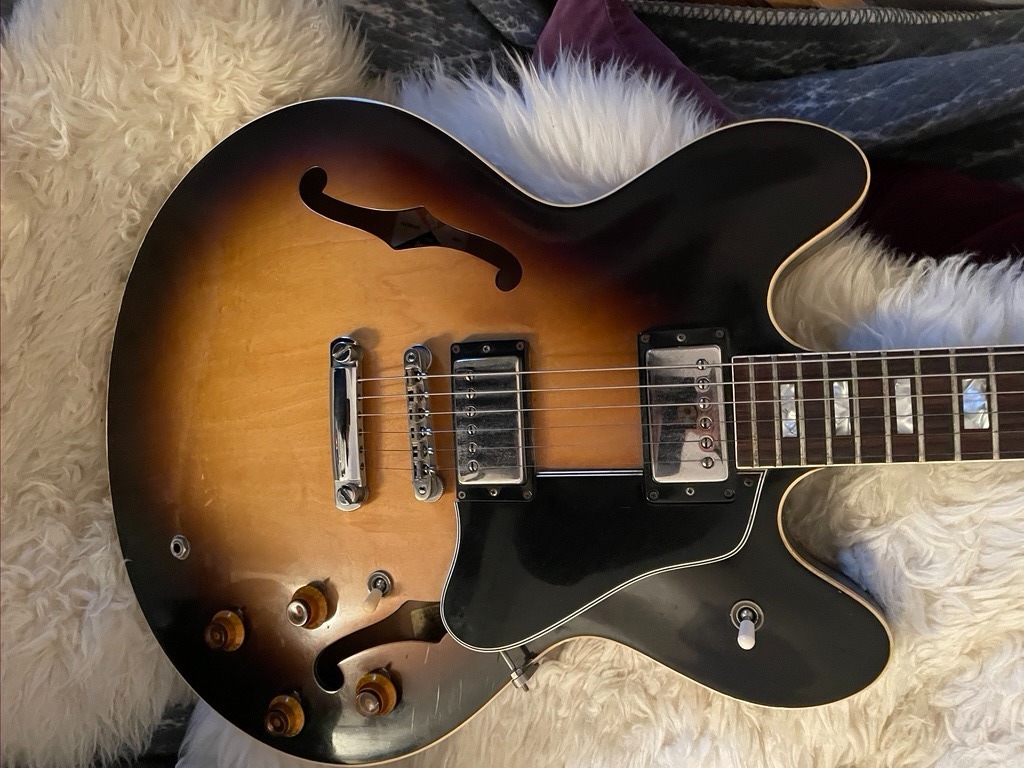
Larry Carlton
Navigating the Musical Landscape: A Journey from Blues to Jazz and Back in the Style of Larry Carlton
Embarking on a musical journey from blues to jazz and back requires a keen understanding of technique, dedication, and an unwavering commitment to the craft. Larry Carlton, a maestro in the world of guitar, exemplifies this transition seamlessly, demonstrating not only his prowess in blues but also his remarkable ability to infuse jazz elements into his music. This lesson will explore Carlton’s distinctive style, delving into his technical approach, track and album examples, and the seamless integration of jazz nuances into diverse genres such as pop, soul, and R&B.
I. Larry Carlton’s Musical Evolution:
A. Blues Foundation:
Larry Carlton’s musical journey began in the heart of blues, where he honed his skills as a guitarist. His dedication and focus on mastering the blues laid the foundation for his future explorations into various genres. Key albums such as “With a Little Help from My Friends” and “Larry Carlton” showcase his early blues influences, establishing him as a formidable force in the blues music scene.
B. Transition to Jazz:
As Carlton’s career progressed, his musical palette expanded, leading him to explore the intricate world of jazz. Albums like “Larry Carlton Strikes Twice” and “Sleepwalk” mark a significant shift in his style, showcasing a fusion of blues sensibilities with sophisticated jazz elements. His technical proficiency became increasingly evident, setting the stage for a remarkable fusion of genres.
II. Technical Mastery in Larry Carlton’s Style: Mr 335
A. Phrasing and Articulation:
One of the hallmarks of Larry Carlton’s playing is his impeccable phrasing and articulation. His ability to convey emotion through nuanced note choices and precise articulation sets him apart. For example, in the track “Room 335” from the album of the same name, Carlton’s phrasing is a masterclass in blending bluesy expression with sophisticated jazz lines.
B. Chord Voicings and Harmonic Richness:
Carlton’s jazz influence is vividly apparent in his choice of chord voicings and harmonic structures. In tracks like “Smiles and Smiles to Go” from the album “Alone / But Never Alone,” he employs rich and complex chords, seamlessly integrating them into the fabric of the composition. This technique adds a layer of sophistication to his music, illustrating his mastery over jazz harmony.
C. Blues Inflections in Jazz Context:
Even as Carlton embraced jazz, he retained his blues roots, infusing his jazz compositions with bluesy inflections. The track “Kid Gloves” from the album “Kid Gloves” exemplifies this blend, where Carlton seamlessly transitions between intricate jazz phrasing and soulful blues bends. This integration showcases his ability to bridge the gap between genres, creating a signature sound that is uniquely his own.
III. Larry Carlton’s Jazz Chops in Diverse Genres:
A. Pop Fusion:
While Carlton’s journey took him into genres like pop, his jazz chops remained a constant force. In the track “Minute by Minute” from the album “Minute by Minute” by The Doobie Brothers, Carlton’s guitar work adds a sophisticated touch to the pop fusion sound. His jazz-influenced solos elevate the overall musicality, proving that jazz can seamlessly coexist with popular genres.
B. Soulful Explorations:
In soulful ventures such as the album “Discovery,” Carlton continues to demonstrate his commitment to jazz, infusing soulful tracks with intricate jazz guitar lines. The song “Nite Crawler” exemplifies this fusion, where his jazz technique shines through in the midst of soulful arrangements, creating a dynamic and engaging listening experience.
C. R&B Fusion:
Even in the realm of R&B, Carlton’s jazz sensibilities remain prominent. Albums like “Larry & Lee” with Lee Ritenour showcase his ability to navigate the complexities of R&B while incorporating jazz elements. The track “Nothin’ But a Groove” exemplifies how Carlton’s jazz chops elevate the groove, adding a layer of sophistication to the R&B context.
IV. Larry Carlton’s Influence and Legacy:
A. Impact on Contemporary Players:
Larry Carlton’s influence extends beyond his discography; it permeates the playing styles of countless contemporary guitarists. His seamless navigation between blues and jazz has become a source of inspiration for musicians looking to expand their musical horizons. The track “High Steppin'” from the album “Friends” by Chick Corea and Steve Gadd features Carlton’s guest appearance, highlighting his enduring influence in the jazz fusion landscape.
B. Educational Legacy:
In addition to his contributions as a performer, Larry Carlton has left an indelible mark on guitar education. His dedication to his craft is evident in his instructional materials, where he generously shares insights into his techniques. Albums like “Larry Carlton’s Room 335” not only showcase his iconic track but also serve as valuable educational resources for aspiring guitarists seeking to understand the intricacies of his playing.
Larry Carlton’s musical journey from blues to jazz and back epitomizes the evolution of a versatile and accomplished guitarist. His dedication to mastering diverse genres while maintaining a strong foundation in jazz has solidified his status as a musical luminary. By exploring his technical approach, examining track and album examples, and recognizing his influence, aspiring musicians can glean valuable insights into the art of seamlessly navigating musical landscapes. Carlton’s legacy serves as a testament to the timeless marriage of blues and jazz, reminding us that true artistic mastery knows no boundaries.







